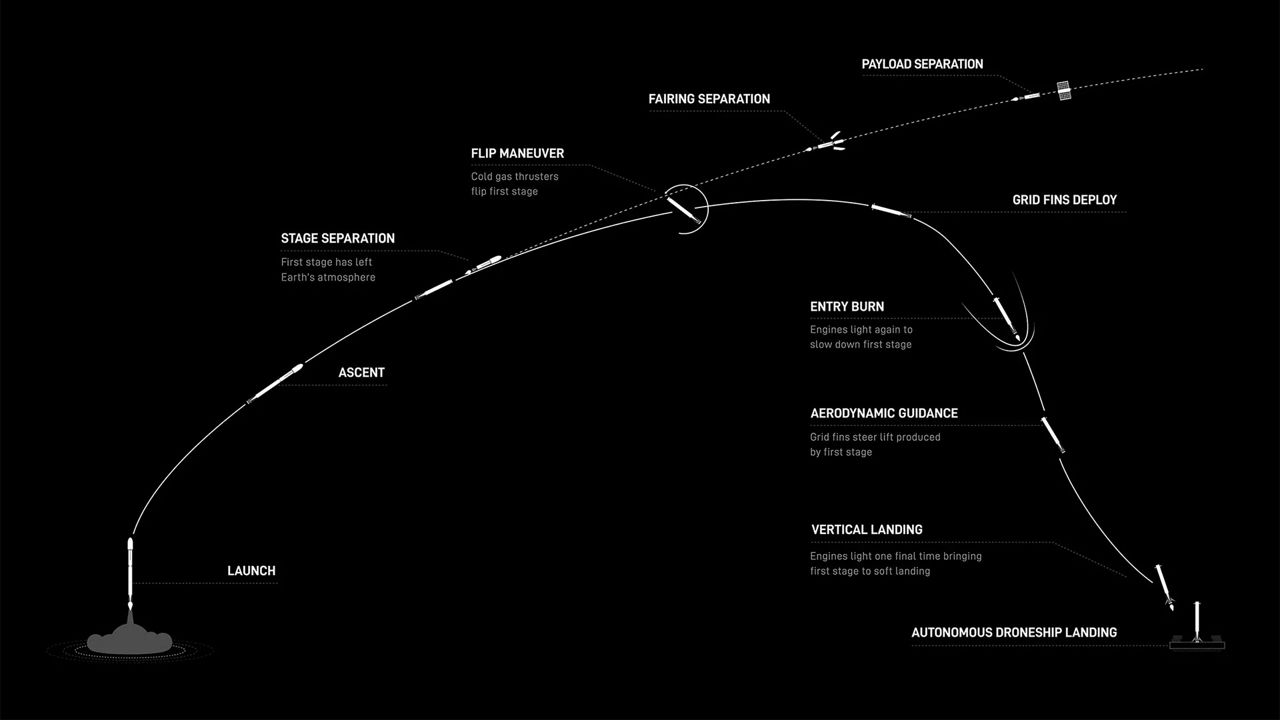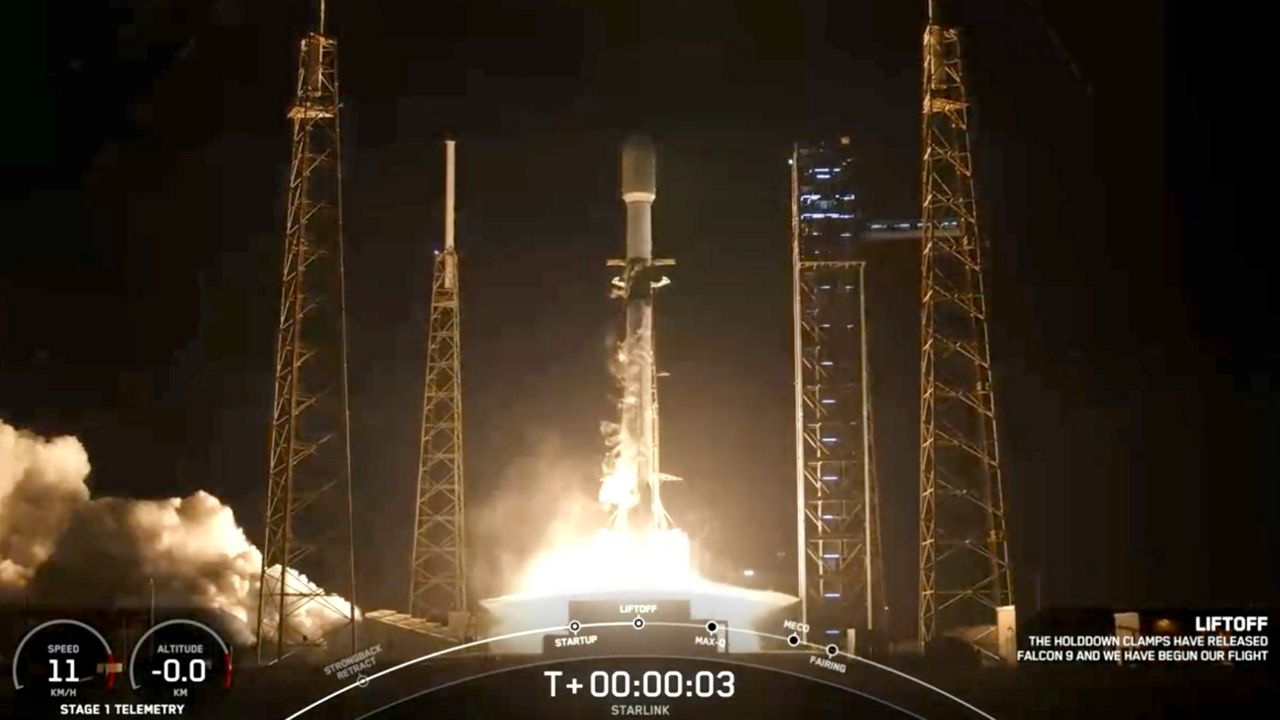CAPE CANAVERAL SPACE FORCE STATION — After a short delay, SpaceX launched more than 20 Starlink satellites on Friday night.
What You Need To Know
- The Starlink 6-49 mission was launched at 9:40 p.m. ET
- The Falcon 9 rocket took off from Space Launch Complex 40
Liftoff of Falcon 9! pic.twitter.com/aMZKAFr897
— SpaceX (@SpaceX) April 13, 2024
The Falcon 9 rocket took off from Space Launch Complex 40 at Cape Canaveral Space Force Station, stated SpaceX.
The launch of the Starlink 6-49 mission happened at 9:40 p.m. ET. It was supposed to start at 9:22 p.m. ET but SpaceX did not explain why there was a delay.
The launch conditions were good at about 95% with only liftoff winds being a concern, stated the 45th Weather Squadron.
If there was a scrub, the next attempt would have been on Saturday, April 13, starting at 9:04 p.m. ET.
Taking off
This is the 20th launch for SpaceX’s first-stage booster B1062. Here is a list of the missions it has successfully launched before this one:
- GPS III Space Vehicle 04
- GPS III Space Vehicle 05
- Inspiration4
- Ax-1
- Nilesat 301
- OneWeb Launch 17
- Arabsat's Badr 8
- 12 Starlink satellite missions
After the stage separation, the first stage landed on the A Shortfall of Gravitas droneship, which is stationed in the Atlantic Ocean.
Falcon 9 lands on the A Shortfall of Gravitas droneship – completing the first 20th launch and landing of a booster! pic.twitter.com/G0w4IlXzNP
— SpaceX (@SpaceX) April 13, 2024

About the mission
The 23 Starlink satellites will join thousands of its mechanical brothers and sisters that are already up in low-Earth orbit.
Starlink, a SpaceX company, stated the satellites provide internet service.
Before the launch, Harvard-Smithsonian Center for Astrophysics’ Dr. Jonathan McDowell recorded the following information about the Starlink satellites.
- 5,787 are in orbit
- 5,721 in working order
- 5,196 are in operational orbit




